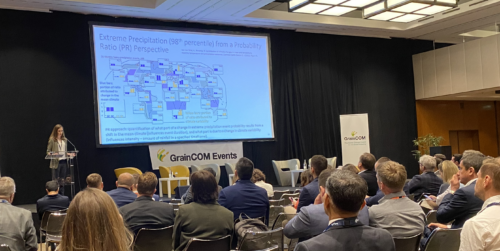05/18/2023, 12:11 pm EDT
Once again, marine heat waves are in the news as a catalyst to a major weather event. A large MHW off the Northwest Africa/Southwest Europe coast the past few months shifted westward the past couple weeks and the latent heat loss where the warm SSTA pattern was previously located (central/west Mediterranean Sea) deepened an upper-level storm that caused "apocalyptic" rains from Italy to Bosnia the past few days.
![Climate-Impact-Company-logo-sm[1]](https://climateimpactcompany.com/wp-content/uploads/2023/08/Climate-Impact-Company-logo-sm1.png)
